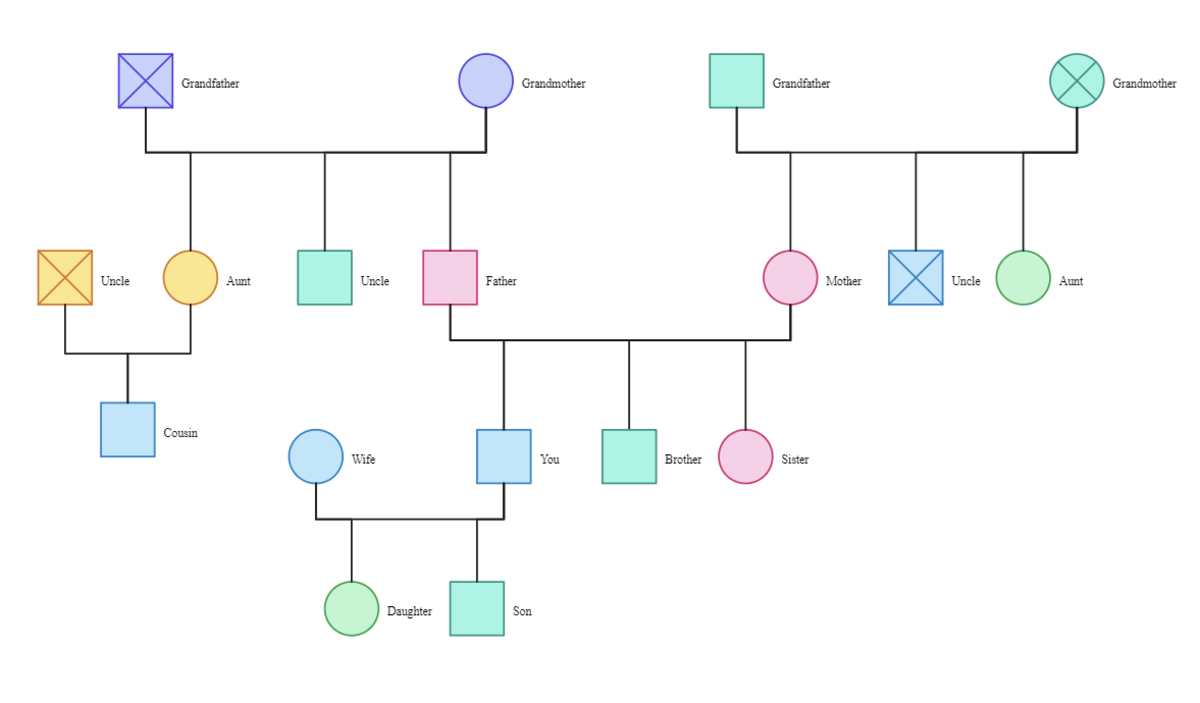- HubPages»
- Technology»
- Computers & Software»
- Computer Software
Best AI Lip Sync Tools for 2025

Why AI Lip Sync Matters Today
In 2025, the race for the best AI lip sync has turned from niche curiosity to mainstream necessity. Creators are dubbing their content into dozens of languages overnight. Filmmakers are reviving archival footage with perfectly synced dialogue. Marketing teams are producing talking-head videos without ever stepping in front of a camera.
At the heart of this shift is lip-sync AI technology that can take any audio track and animate a face so the mouth movements match flawlessly. It’s no longer about “good enough.” The expectation is realistic speech movement, expressive emotion, and timing so precise that even a trained eye can’t spot the illusion.
In this guide, you’ll get a full breakdown of what makes AI lip-sync software great, the top tools in 2025, how they compare, and which one is right for your needs.
How AI Lip Sync Works
The first step in understanding why some tools are more effective than others is to know the base technology. AI lip sync incorporates machine learning and computer vision, which are generally deep neural networks that have been trained on massive datasets of face and speech.
Core Components of AI Lip Sync
- Audio Analysis: The program goes through the audio file and finds the phonemes, which are the smallest sound units in speech.
- Facial Mapping: The AI tracks the main features of the face (lips, jaw, cheeks, and eyes) to produce the lifelike movements.
- Synchronization: The model assigns the phoneme to the matching mouth shape, thus accurate time is maintained.
- Emotion Integration: High-level software can also detect the tone and give the emotional cues of the audio, which can help the face to relax and make the speaker’s intent visible.
Key Features That Define the Best AI Lip Sync
Instead of jumping to who the winners are right away, we better understand what characterises the best AI lip sync.
1. Precision and Timing:
The most important thing: is the sound matched with the mouth? A delay of half a second or an ugly shape of a sound that only a few letters are spoken can spoil the whole scene. The best products make use of highly developed neural models to get the right sound and the correct way to breathe for every vowel, consonant, and micro-pause.
2. Natural Facial Expression
Great lip sync can't be satisfied with just the movement of the lips. The face (cheeks, jawline, and even eyes) is also affected by speech and moves a little bit accordingly. Without this, the product becomes robotic-like.
3. Real-Time or Fast Processing
If you are a daily streamer or content creator, you must have a speed that is essential. A real-time or almost instant rendering can make you save several hours for each project.
4. Multilingual and Dubbing Support
An ideal AI lip sync tool that is capable of handling multiple languages, besides English, is a must-have. Spanish, Mandarin, Hindi, and Arabic seem to be the most viable languages to cover the entire globe.
5. Integration and Workflow Fit
There are some tools that come with a web dashboard. While others are designed for developers and have APIs. The right one is determined by the necessity of you being able to use it sporadically or for mass production.
6. Price vs. Value
The most expensive option is not always the best for you. Some free or low-priced tools may yield results comparable to those of luxury platforms - if they are compatible with your requirements.
The Best AI Lip Sync Tools in 2025
Just a glance at the top performers this year gives you a clear picture of the main things they compete in. Each of them excels in its field.
1. LipSync.video (The No-Cost Leader)
LipSync.video has built a loyal following because it delivers solid multi-language lip sync for free. Simply upload a video, an audio file, or record it, and the platform handles the rest.
Pros:
- Free from any cost limitations
- Lots of languages supported
- Short clip real-time syncing enabled
- Very little ramp-up time
Cons:
- Limited customization
- Not ideal for cinematic or long-form projects
Best For: Creators just starting, educators, or anyone that wants to get fast plus high-quality lip-sync without having to pay any subscription.
2. LipDup (Film and Animation Quality)
The aim of the LipDup is clear: it targets the professional stage of the film, the animation, and 3D rendering of the field. The tool is deeply integrated into the production pipelines and allows 3D character rigging.
Pros:
- Very accurate syncing for cinematic work
Animation software compliant
- Neural models handle subtle facial nuance
Cons:
- Steeper learning curve
- Requires more computing resources
Best For: Large media companies, e-learning platforms, and dubbing agencies.
3. Sync.so (The Scalable Cloud API)
Sync.so is an enterprise-oriented platform designed for bulk processing. It’s built for companies needing to lip-sync hundreds or thousands of videos.
Pros:
- Cloud API with easy-to-understand developer documentation
- Batch processing for large workloads
- Very customizable settings
Cons:
- Requires technical knowledge to set up
- Not beginner-friendly
Best For: Large media companies, e-learning platforms, and dubbing agencies.
4. Vozo AI (Long-Form Lip Syncing)
Vozo AI is the best for long videos with a duration of up to an hour. It is also capable of dealing with multiple speakers in one scene. On top of that, it produces the natural head movements to complement the facial expressions for more realistic results.
Pros:
- Deals with lengthy videos without losing the synchronized
- Recognizes multi-speaker
- More than 50 languages are supported
Cons:
- Subscription-based
- Heavy processing for extremely long files
Best For: Documentary makers, webinar hosts, and multilingual corporate communications.
5. HeyGen (Cinematic Avatars at Speed)
By combining ultra-fast lip sync with high-quality AI avatars, HeyGen creates the perfect solution. Those who want done, clean, long talking-head videos in a matter of minutes, use it to great success.
Pros:
- Sub-12 ms latency for near real-time response
- Wide array of ready-to-use avatars
- Implement voice cloning to keep your branding consistent
Cons:
- Avatar selection may be limiting
- Less control over advanced facial nuance
Best For: Businesses, content marketers, and social media teams.
6. Synthesia (Enterprise-Ready Avatar Videos)
The aforementioned company has delineated the field of audio-visual corporate training and is presently dominating it by launching highly dependable lip-syn avatars in company templates.
Pros:
- Fortune 500 companies are among its clients
- Performance of an avatar that is both stable and steady
- Very accommodating with more than 120 spoken languages
- Realistic avatars from still photos
Cons:
- Higher price point
- Less suitable for casual creators
Best For: Influencers, social media creators, and marketers focusing on short-form audiences.
7. D-ID (Social Media Focus)
D-ID is built for speed and shareability. It’s often used to create short-form, photorealistic talking-head content for TikTok, Instagram, and similar platforms.
Pros:
- Fast turnaround times
- Simple, beginner-friendly interface
- Realistic avatars from still photos
Cons:
- Limited long-form support
- Avatar customization is basic
Best For: Influencers, social media creators, and marketers targeting short-form audiences.
8. Magic Hour (Live Short-Form Creation)
Magic Hour provides a combination of on-the-spot execution and quick rendering, which is ideal for those creators that want a live interaction or a post within a few minutes.
Pros:
- Free plan available
- Live performance feature
- Short clips and dynamic content are its strengths
Cons:
- Limited advanced customization
- Best for short-form rather than cinematic projects
Best For: Livestreamers, virtual event hosts, and interactive creators.
Open-Source and Research-Level Lip Sync
In case the developers, the academics, or the hobbyists require more control over the process, it is recommended that they know about these open-source and research projects:
- Wav2Lip: A publicly available baseline that most of the commercial tools are relying on.
- MuseTalk: The project that manages to keep high fidelity above 30 FPS, thus being suitable for live use.
- OmniSync: The diffusion-transformer model for lip-sync that has just been introduced to push further the realism of lip sync.
- Diff2Lip and StyleLipSync: The research frameworks that provide identity consistency and expressive realism.
Unlike commercial tools with plug and play, open-source lip sync provide various flexibility for custom applications.
How to Choose the Best AI Lip Sync Tool
While selecting a suitable AI lip sync tool, you must examine the following factors:
- Accuracy: The foremost feature that you should look for is the capability of the software to produce the correct lip movements that are synchronized with the audio.
- Customization: It is better to find a tool that offers various options for you to change the lip movements and the facial expressions.
- Ease of use: Pick the one that is straightforward and requires minimal technical knowledge to operate.
- Cost: Check the price of the product and see whether it is compatible with your budget.
Tips for Using AI Lip Sync Tools
- Use high-quality audio: A high-quality audio is a must if you want the lip movements to be natural and realistic.
- Adjust the timing: To make the lip movements sync with the audio, it is necessary to adjust the timing.
- Experiment with different styles: Try out different styles and tweaking options until the one that suits your project and you find best comes out.
Real-World Applications
AI lip sync is definitely more than just a fancy show; it is changing the whole gamut of the business world:
- Marketing and Advertising: You can easily create brand campaigns in different languages while keeping the brand voice the same.
- Education and E-Learning: Through the use of technology, teachers and platforms produce attractive and relevant contents that facilitate students all over the world.
- Film and Animation: Just by one step, the animators make the characters to be perfectly synchronized and at the end of the day not only they save a large amount of time, but also they get the realism of the film to be higher.
- Social Media: Influencers make preproduction to go viral in which contents are ready for 5 languages at a time.
- Corporate Training: Corporations generate cost-efficient multiple foreign-language versions of onboarding videos.
The Future of AI Lip Sync
Lip sync AI will be more expressive and realistic in the future.
- Microexpression realism: The faces will emit very faint emotions without the need of a manual instruction.
- Real-time global dubbing: Live talks that are in one language but appearing as a perfect lip-synced speech in another.
Basically, it will not only match the audio but also give out the feeling of the audio.
For example, powerful diffusion-based models like OmniSync that are very close to human-level for facial motion generation have already demonstrated that the AI can produce the motion just like the one of the originals, even if it is very small one like a micro-expression.
The new features that will be included are those that allow the real-time performance of video calls to be retained, but with the advantage of viewers being able to see a different language they are speaking.
Conclusion
Finding the best AI lip sync tool in 2025 is about matching the software’s strengths to your goals.
- For quick, no-cost projects, LipSync.video and Magic Hour are are great.
- For cinematic precision, LipDup and Vozo AI are the best.
- For business scaling, HeyGen, Synthesia, and Sync.so are the best choice.
The utilization of AI for lip-sync has been transformed from a simple effect to an indispensable part of content creation.
The future of technology will only improve. The wise decision would be to initiate testing right away and maintain your lead.
© 2025 Aboah Okyere








![[Fix] Kaspersky Error: “Digital Signature of Installation Files Missing” [Fix] Kaspersky Error: “Digital Signature of Installation Files Missing”](https://images.saymedia-content.com/.image/t_share/MTc2MjYyMjc4MjA5ODczMDY5/fix-kaspersky-error-digital-signature-of-installation-files-missing.png)